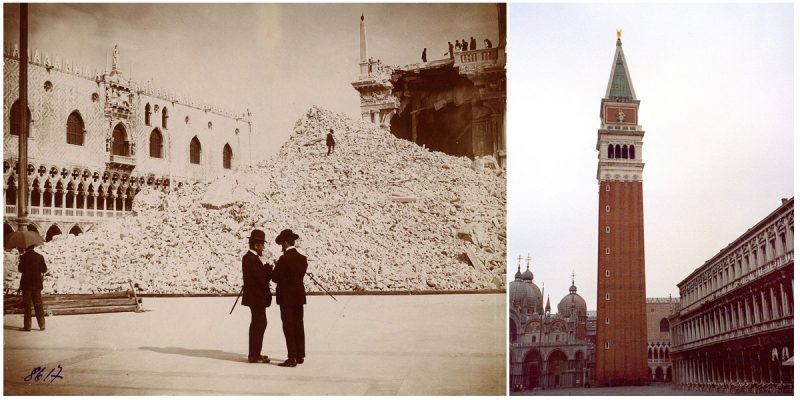One of the most recognizable symbols of Venice is the St Mark’s Campanile which is located in the Piazza San Marco. The tower is 323 feet and is the tallest tower in Venice capped by a gold figure of the Archangel Gabriel.
The first tower standing at the site of the campanile was built in the 7-th century, and the construction of the current building started in the 9-th century and was completed several centuries later. Reconstructions were made in 1912 because the tower collapsed in 1902.
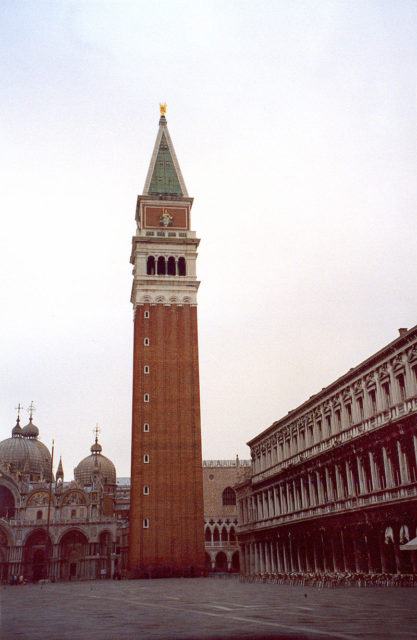
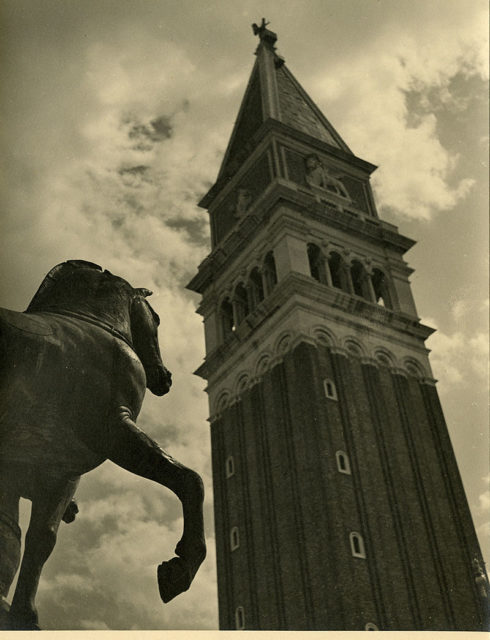
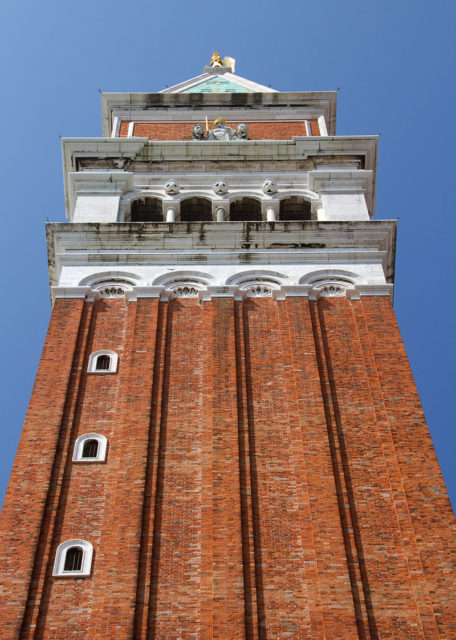
The construction of the tower in the 9-th century was built on Roman foundations during the reign of Pietro Tribuno, and it was used as a watchtower or a lighthouse. During the reign of Domenico Morosini in the 12-th century, the construction was finished. The Campanile suffered from many damages during the centuries.
It was damaged by lightning several times, and in 1388, 1417, and 1489, it was severely damaged by fire. In 1653, to repair the damages, Baldassarre Longhena took up the restorations. After a few repairs, the tower was damaged again by the same causes, and finally, in 1776, it was equipped with a lightning rod.
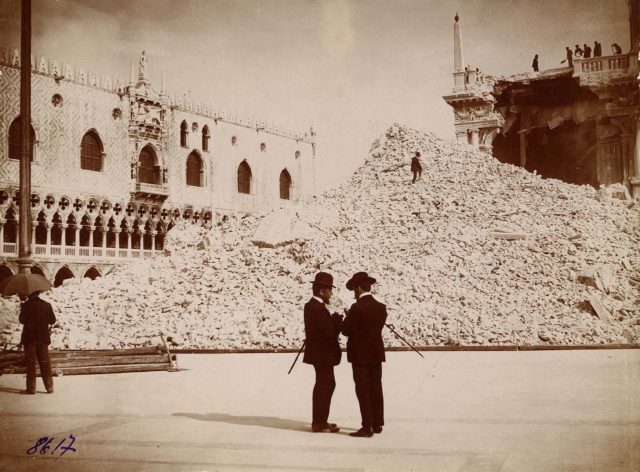
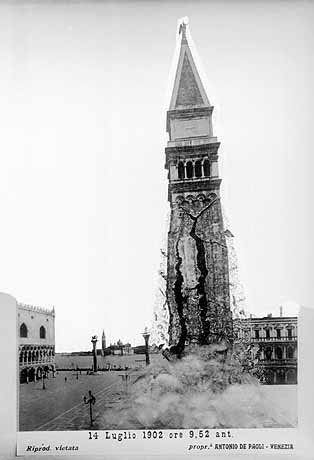
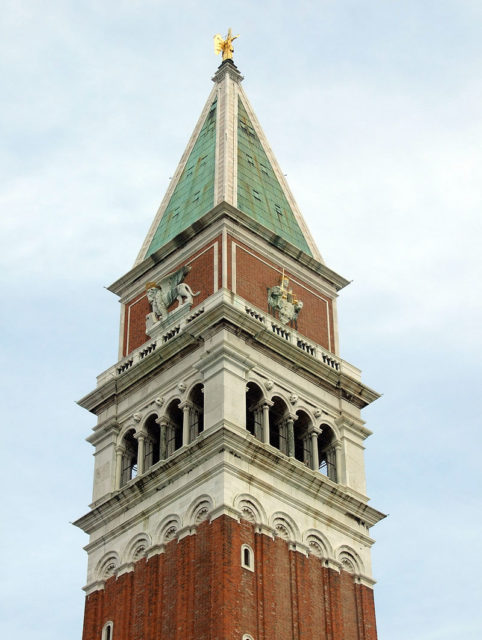
After suffering substantial periods of damage and restoration throughout the centuries, in 1902 the campanile had collapsed completely. The cause of the collapsing, which was noticed in June 1902, was the crack in the north wall of the tower that in the following days continued to grow. No one was killed, except the cat of the caretaker. According to Building failures, just before the collapse, the sound of falling stones within the bell chamber warned the people in or near the tower to flee. Thus no life was lost in the accident.
When the tower collapsed it almost demolished the logetta and a corner of the Biblioteca Marciana was destroyed. The same night, 500, 000 lire were approved by the communal council for the reconstruction of the campanile. The reconstruction lasted until March 6th, 1912, and the tower was rebuilt exactly as it was, and also, an elevator was installed.
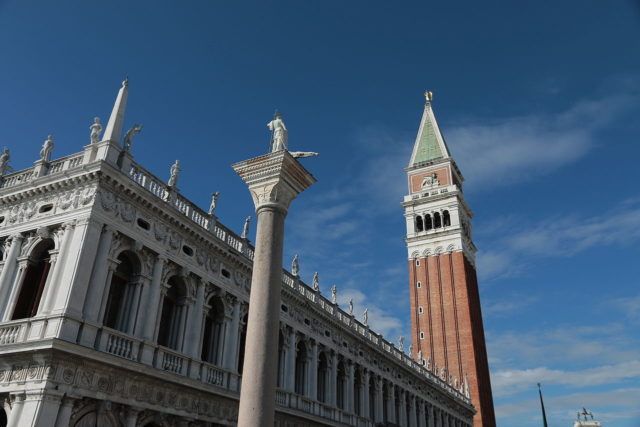
Many replicas of the original Campanile were made worldwide. Almost identical but smaller replicas built during the 17-th century can be seen in the town Piran in Slovenia or Rovinj, Croatia. Later replicas can be seen in Seattle, Australia, South Africa, and Pennsylvania.
In the tower, there is a plaque that commemorates an important event from 1609 when Galileo Galilei famously demonstrated his telescope to the Doge of Venice from the tower. The bell tower is open daily and visitors can climb to the top to experience the views.
